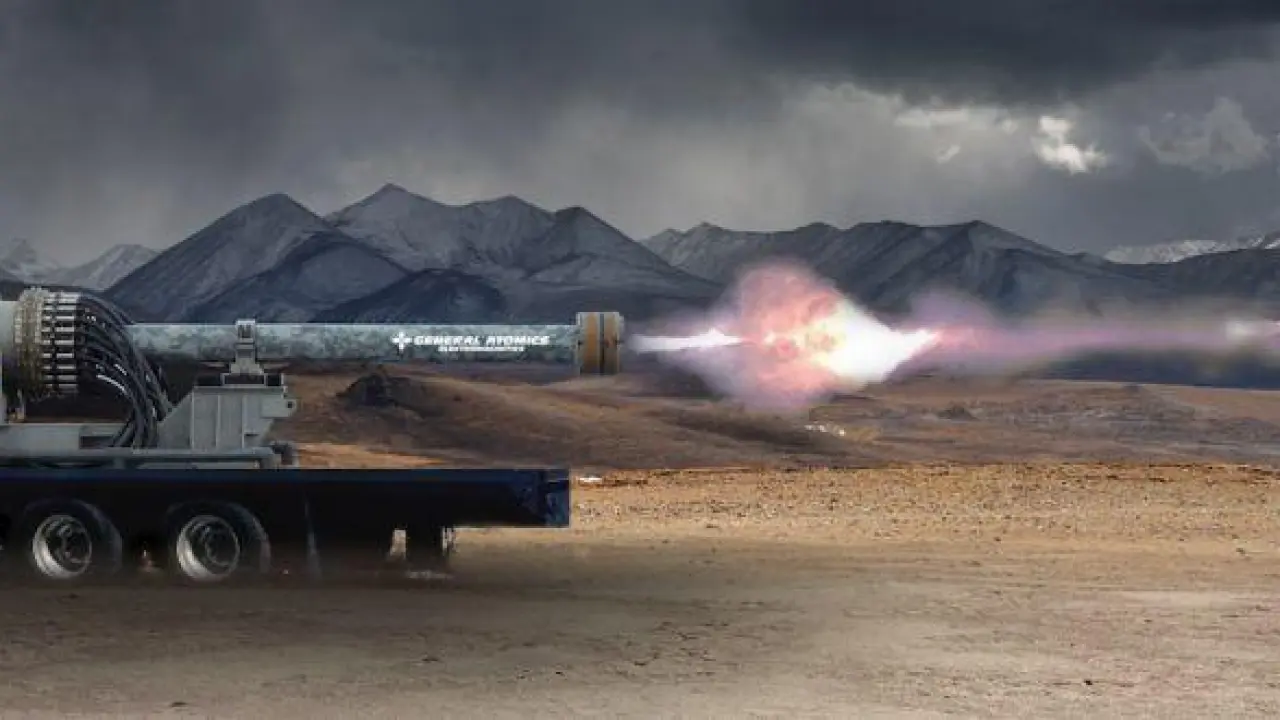India’s Defence Research and Development Organisation (DRDO) is pushing the boundaries of electromagnetic railgun technology.
The Armament Research and Development Establishment (ARDE) has successfully developed and tested a variety of key technologies, including battery-powered compact power sources, tiny capacitor banks, and railgun barrels.
This year, high-energy density capacitors and semiconductor switches were prototyped and validated under operating settings, indicating significant progress in system maturity.
This year has seen substantial improvements to the railgun launching technology. The modified launcher has conducted several successful test firings, demonstrating increased dependability and performance.
The device has a modular capacitor bank design, with each module holding 400 kJ and contributing to a total energy capacity of approximately 10 MJ for projectile propulsion.
These capacitors are charged by a lithium chemistry cell-based battery bank powered by a portable 15 kW diesel generator, which can reach full charge in 30 minutes, enabling for field deployment without reliance on grid power.
Railgun projectiles achieve hypervelocity velocities of over 2,000 metres per second, driven by electromagnetic forces rather than standard chemical propellants.
The monolithic armature design, combined with upgraded rail materials, allows for a firing rate of three rounds per minute, with each rail capable of surviving over 50 shots before requiring maintenance. This durability marks a significant improvement over previous prototypes and better aligns with wartime operational tempo needs.
The DRDO’s development roadmap includes the Centre for Electromagnetic Launcher Technologies (CEMaLT) in Pune, an advanced facility dedicated to scaling up to next-generation systems, including plans for a 100 MJ railgun capable of firing heavier projectiles (up to 18 kg) at hyper-velocity.
This is consistent with the goal of bridging the technology gap between conventional artillery and missile weapons, resulting in long-range, extremely precise strike capabilities.
Technical hurdles remain significant, particularly in controlling excessive power handling, component insulation, and built-in operational safety features.
However, advancements in capacitor technology, semiconductor switches, and materials science lay a solid platform for future system optimization. The use of compact, road-transportable systems improves strategic mobility and deployment versatility across a wide range of combat scenarios.
The DRDO railgun program is on a good path, with validated prototypes and successful live firings to validate essential subsystems.
The confluence of tiny power sources, sophisticated capacitors, and perfected barrel technology paves the way for imminent field trials of transportable units.
This signals India’s emergence as a genuine contender in electromagnetic weapon technology, with potential applications in maritime and land warfare domains, and is a step toward future high-velocity weapon systems.



